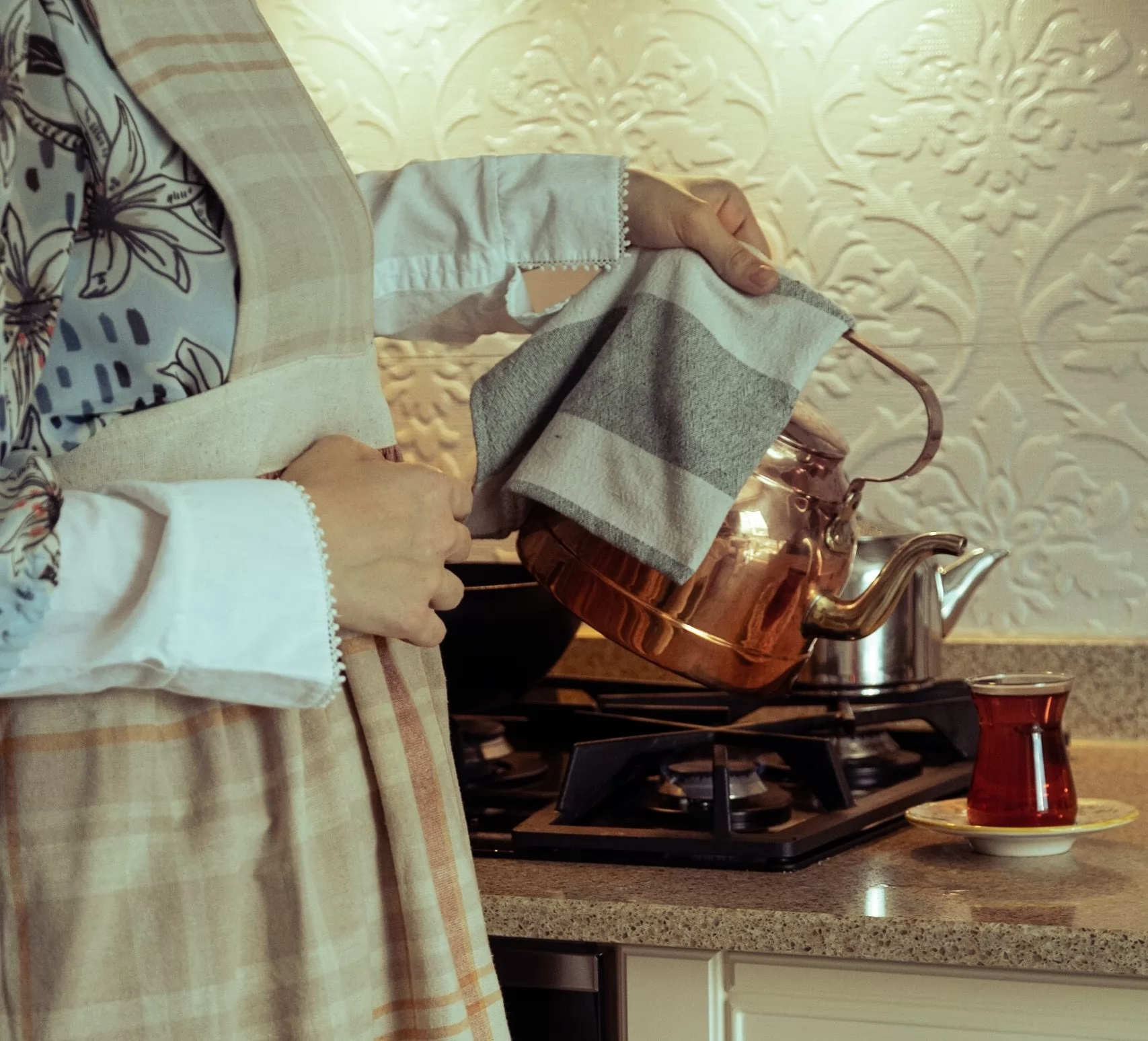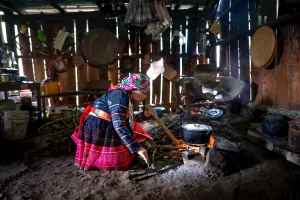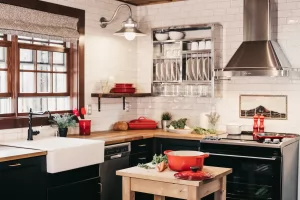
Have you ever wondered how the Indian kitchen evolution came to be what it is today? Indian cuisine is known for its rich and diverse flavours that are a result of the intricate blend of spices and ingredients.
The evolution of Indian kitchens is a fascinating tale of culture, tradition, and innovation that spans over centuries. From cooking over open fires to modern-day modular kitchens, the Indian kitchen has come a long way, and in this blog, we will take you on a journey through time to explore its transformation. So, buckle up and get ready to indulge in the flavours and history of Indian kitchens. This is how it went:
Ancient times
From ancient times, kitchens in Indian homes were often located outside the main living quarters and were typically fueled by wood or charcoal. The design of the kitchen was simple, with a hearth or chulha (clay stove) and vessels made of copper, brass, and clay used for cooking.

Ancient cooking
Medieval period
During the medieval period, the design of Indian kitchens became more complex and varied, reflecting the influences of different regions and cultures. It is the time when a lot of foreign elements came to India and influenced the cooking style and habits of the people in India.
Colonial era
The colonial era brought significant changes to the design of Indian kitchens. With the arrival of the British, kitchens began to be equipped with more modern amenities such as gas stoves and refrigerators. The introduction of Western-style cooking techniques and utensils also had an impact on the design of Indian kitchens.
Post-independence
Following India’s independence in 1947, the design of kitchens in Indian homes began to evolve rapidly. With the growth of urbanization and the rise of the middle class, kitchens became more functional and efficient, focusing on ease of use and convenience.
Today’s kitchens
Today, kitchens in Indian homes are designed to meet a wide range of needs, from traditional cooking techniques to modern appliances and cooking styles. Many kitchens now incorporate modular designs, with separate areas for cooking, storage, and washing.

Indian Modular kitchen
Now let’s Unleash the beauty of diversity in;
1) Kitchen Designs:
Regional variations
It is important to note that there are significant regional variations in the design of kitchens in India. For example, kitchens in the South tend to be smaller and more enclosed, while those in the North are larger and more open. There are also differences in the types of utensils and cooking methods used in different regions.
Cultural significance
It’s worth noting that kitchens in Indian homes have great cultural significance. They are often seen as the heart of the home, where families come together to cook, eat, and socialize. The design of the kitchen is therefore an important consideration, and many families take great care to ensure that it reflects their cultural traditions and values.
2) Kitchen Storage System:
Regional differences
India is a diverse country, with different regions having unique storage systems in their kitchens. For example, in South India people are generally very particular in the way they want to organize their kitchens whereas, in North India, people prefer to have a kitchen that has bigger storage systems. People also want cabinets with glass doors for storing utensils and crockery.
Traditional storage systems
Many Indian households still use traditional storage systems in their kitchens. For example, in some parts of India, clay pots called “matkas” are used to store water and keep it cool. Similarly, “bharanis” (clay or brass containers with lids) are used to store spices and herbs, keeping them fresh and flavourful.
Modern storage systems
With the rise of modular kitchens, many Indian households are now opting for more modern storage systems based on the ideas of clever storage. These can be MiO drawers, cabinets with Freelift systems, cookingAgent pullouts, LemansII corner unit, built-in appliances such as microwaves and ovens, etc.
Spices and herbs are often organized in the pattern of their usage and utensils are typically grouped by type and size. This helps to save time and makes cooking more efficient.
The kitchen’s metamorphosis mirrors THE EVOLUTION OF WOMEN’s ROLE, from traditional homemakers to modern-day culinary pioneers;
The kitchen has always been considered the heart of the home, but it’s also been a space that has traditionally been associated with women. However, with the evolution of kitchen designs and technology, the role of women in the kitchen has also evolved.
From being a space where women were expected to spend most of their time cooking and cleaning, the modern kitchen is now a hub for creativity, experimentation, and innovation.
Women are no longer confined to the traditional roles of homemakers; they are now taking charge of their lives, pursuing their passions, and making their mark in the culinary world.
The kitchen has become a platform for women to showcase their talent, hone their skills, and break down the stereotypes that have held them back for generations.
As we celebrate the evolution of kitchen designs, let’s also celebrate the trailblazing women who have paved the way for a more inclusive and diverse culinary landscape.

Modern Women in kitchen
Thank you for reading today’s blog on the evolution of Indian kitchens and the changing role of women in the culinary world. We hope you enjoyed the insights and found them informative.
Our aim is to bring you engaging and thought-provoking content, and we welcome your feedback and suggestions. Please do come back on Thursday for more such blogs on a variety of topics that we hope will pique your interest. Until then, stay safe and keep exploring the world around you.
– Stay Organized Stay Ahead
